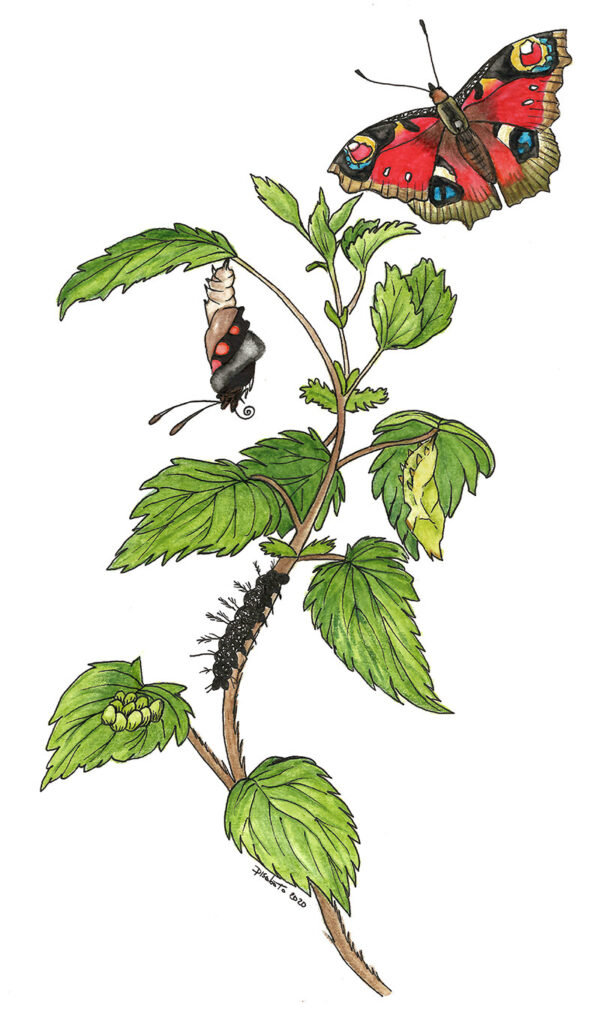The egg
In many species of lepydoptera there is a close relationship between butterfly and “nurse plant”. This is the place where the adult lays its eggs, the plant that will provide the leaves the caterpillar will feed and on which it will settle to become a chrysalis. These species of butterflies lay few eggs on the leaves of the nurse plants. Other species spread hundreds of eggs on a meadow and the caterpillars that will be born will have to go and look for their own nurse plant.
The caterpillar
The mouthparts are adapted for chewing and its powerful mandibles allow it to eat up a lot of leaves. In some species of lepidoptera the caterpillar eats even wood. During the growth, the larva sheds the exoskeleton, normally 4-5 times. This process is called moulting.
From pupa (chrysalis) to adult butterfly
At the end of its larval life, the caterpillar locks in a hard cocoon, where undergoes other transformations until it becomes an adult butterfly. In most species the chrysalises remain fixed to the nurse plant and receive a mimetic colour, mixing with the leaves and branches. When the conditions of the habitat will be suitable, the cocoon will begin to break and the adult butterfly will start going out. After that, in about 1 hour, it will be able to open the wings and begin its flight.
